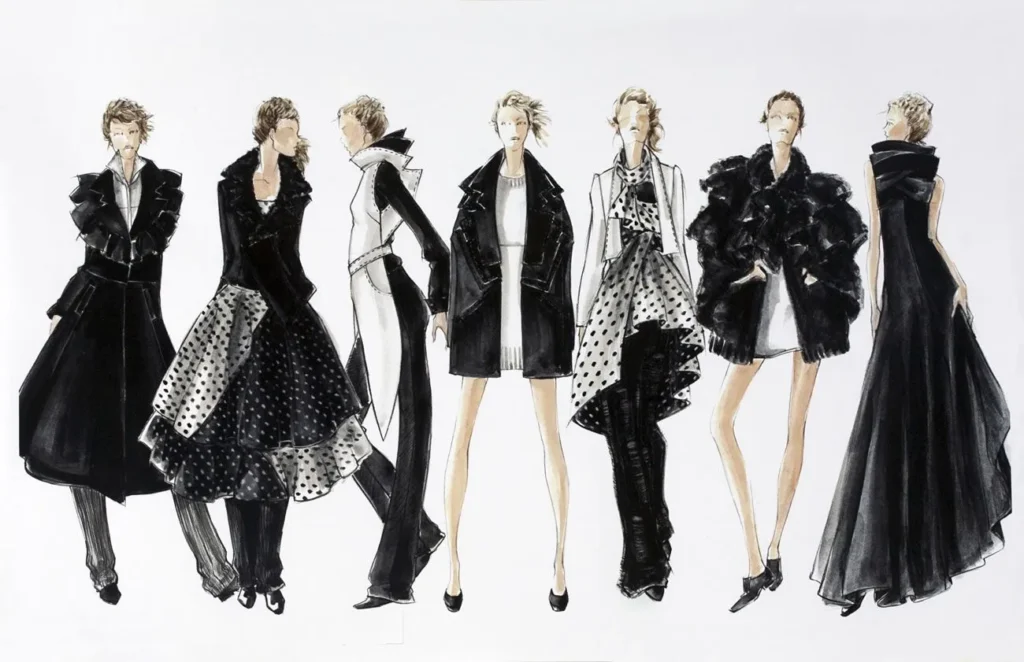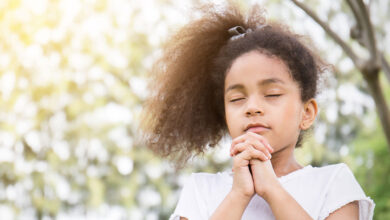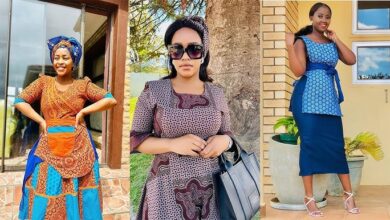Mastering Fashion Illustration: A Guide to Popular Styles 2024


Fashion illustration is an integral part of the design process for clothing lines, magazines, lookbooks, and more. But it’s also a unique art form with a rich history and culture all its own. From classical realism to modern digital looks, there are countless fashion illustration styles used today by designers, artists, students, and professionals alike.
In this comprehensive guide, we’ll explore the most popular fashion illustration techniques, including:
- Realistic rendered illustrations
- Stylized editorial illustrations
- Commercial product illustrations
- Watercolor and ink washes
- Digital vector and 3D illustrations
- Surface pattern and textile illustrations
Whether you’re a fashion student building your first portfolio, an illustrator being commissioned for magazine editorial work, or a designer developing a new apparel collection, you’ll gain a deeper appreciation for various illustration styles after reading this post. You’ll not only learn to identify different aesthetics, but understand their uses, applications, and unique qualities.
Why this post will help readers: This comprehensive fashion illustration style guide will teach you the distinctions between popular illustration aesthetics like watercolor, line art, digital rendering, and more. With this knowledge, you’ll be able to experiment with new styles, hone your brand, and create portfolio pieces that stand out.
Realistic Fashion Illustration
One of the most traditional and classical approaches to fashion illustration is realism, or photorealism. These illustrations are meticulous, accurate depictions of the garments and the figure wearing them. The goal is to render designs in an ultra-realistic way to show precise details.
Hallmarks of the realistic illustration style include:
- Rendered Garment Details: Shading is used to depict how the fabric will drape, fold, and move with the body. Textures like knits or lace are drawn explicitly. Lighting and shadow play a big role in bringing designs to life.
- Proportional Figures: The models or mannequins are drawn with accurate anatomy and proportions based on the standard measurements and poses of the human form.
- Media Like Pencil, Chalk, Charcoal: Traditional art supplies are often used, like colored pencils, graphite, chalk, charcoal, and soft pastels. These allow shading and blending for photorealistic effects.
Realistic fashion illustrations in this vein are highly technical and skilled. They remain extremely important tools for fashion designers to render product details for technical packs, line/layout plans, and for patternmakers and sample rooms.

You’ll often see this classical illustration style from established fashion houses, designers, and legacy brands that value traditional techniques. [Links to brand examples and illustration portfolios]
Stylized Fashion Illustration
In contrast to the realism approach, stylized or editorial fashion illustration is all about an exaggerated, imaginative look. These illustrations are more about conveying an overall mood, feeling or concept than product accuracy. Popular with magazines, blogs, social media fashion illustrators, this style prioritizes artistic expression over literal representation.
Key characteristics of stylized fashion illustrations include:
- Exaggerated Figures: Bodies are elongated with extremely long, skinny limbs and torso. Faces may be simplified or obscured completely. Posing can be dramatic or conceptual.
- Simplified Details: Clean lines, flat colors and minimal shading create a more graphic, two-dimensional look compared to realism. Only the most essential garment lines and shapes are included.
- Trendy Artistic Looks: Splashes of paint, charcoal streaks, collage elements or other mixed media techniques give these illustrations an edgy, modern aesthetic that fits editorial content.
This loose, suggestive style is hugely popular in the fashion media world for its fresh, creative expressions. Fashion illustrators like [name] are known for their distinctive stylized looks frequently featured in [publications].

With more room for artistic interpretation, stylized illustrations allow the illustrator to convey subjective concepts and moods around a designer’s collection, beyond just garment details. [Links to illustrator and editorial examples]
Fashion Illustration for Advertising
Realistic and stylized illustrations are hugely popular for their respective use cases. But another major fashion illustration category is commercial advertising work for brands, retailers, and clothing companies. Here, the needs are very specific and focus on:
- Technically Accurate Product Illustrations: When advertising garments for sale online or in catalogs, retailers need clear illustrations of each product from multiple angles that are true to life. This informs customers of the accurate colors, shapes, details, and fits.
- Consistent Illustrative Branding: Big fashion brands will hire illustrators to create illustrations in a consistent style that visually supports their brand identity and matches their marketing looks season over season.
- Digitally Edited Illustrations: Clothing e-commerce channels often digitally edit stock garment illustrations to apply graphic prints, patterns, logos, illustrations and effects for faster marketing asset creation.
While commercial advertising illustrations are highly technical, there is often still room for creative embellishment, like illustrated graphics, fonts and other brand design elements incorporated into the final illustration.
Major fashion brands that rely heavily on illustration for advertising campaigns and editorial content like [brand examples] work with agencies and illustrators specializing in commercial illustration [agency resource links].
Watercolor & Ink Wash Fashion Illustration
One of the most universally popular and accessible illustration aesthetics is the watercolor and ink wash look. These illustrations have a beautiful, soft and romantic feel while still allowing plenty of design detail.
Watercolor and ink fashion illustrations are defined by:
- Flowy Washes and Brushstrokes: The wet-on-wet watercolor technique creates drifting pools of diluted color that blends naturally for gorgeous washes over forms.
- Ink Pen Sketching and Line Work: Sections are defined and accented with deliberate ink outlines, crosshatching, and fine sketched details over the watercolor washes.
- Loose, Painterly Feeling: The essence of this style is maintaining the visible brushstrokes, dripped pigments, and bleeding between colors for an organic, handmade look.
- Achieves Dreamlike, Soft Effects: The combination of sheer color glazes and precise ink line allows for incredible depth and luminous effects perfect for capturing fabric movement, lighting, and gestural poses.

Watercolor and ink fashion illustrations strike a lovely balance between loose creative illustrations and practical design renderings. They work beautifully for everything from high-end editorial illustrations in [publication names] to promotional collection illustrations.
Illustrators like [artist examples] are masters of this lush painting style, using [tools] and techniques [like online watercolor illustration courses] to achieve the flowy yet refined aesthetic. [Relevant links]
Digital Fashion Illustration
While traditional mediums will always have a place, digital fashion illustration using tablets, computers and software programs has grown exponentially thanks to efficiency, versatility and creative possibilities. Here are some of the major digital illustration styles:
- Vector Illustrations: Using programs like Adobe Illustrator, artists create flat vector graphics made of simple shapes, lines, and solid colors. These illustrations have a very clean, contemporary, graphic look ideal for fashion branding and marketing.
- 3D Modeling & Rendering: With specialized CAD fashion design software, emerging 3D modeling tools can generate hyper-realistic digital illustrations by mapping fabric renders over a customizable mannequin.
- Tablet Illustrations: Professionals use tools like Photoshop, Procreate and Fresco to create digital illustrations mimicking the effects of real media like watercolors, oil paints, inks, chalks and more all on a portable tablet device.
Rather than physical traditional supplies, digital fashion illustrators use stylus tools on Cintiq tablet displays or drawing tablets paired with cutting-edge software to create vector graphics or ultra high-res illustrations with both technical accuracy and stylistic diversity.

Because digital illustration is so flexible, fashion illustrators can seamlessly pivot between working on highly technical projects like digital product catalogs one day and exploring new personal creative illustration styles the next.
Resources like [online courses], [tutorial videos], and [digital brushes] make it easier than ever for fashion artists to cross over into digital or incorporate digital elements into their traditional work. [Links to resources]
Surface Pattern & Print Fashion Illustration
While most fashion illustrations focus on the full garments and designs, a specialized type of illustration is required specifically for printed textile patterns and surface pattern designs.
For technical print and pattern illustrations, artists must create:
- Motifs and Repeating Patterns: Rather than full garments, prints require illustrating the core pattern elements like graphics, florals or symbols.
- Tiled or Seamless Illustrations: These motifs must be drawn as repeating sequences designed to seamlessly connect into full patterns.
- Technical Repeats and Colorways: Fashion brands need pattern illustrations mocked up in all the colorways and print variations for their collection.
Where a full garment illustration set may include one or two illustrations, a printed textile collection requires dozens of individual pattern illustrations with various layout formations, color edits, and high pattern repeat precision.

This highly technical fashion illustration specialty is crucial for print-heavy brands like [brand examples], which design signature graphics and surface prints for each season. [Relevant links to brand/artist pattern portfolios]
Conclusion
From realistically rendered illustrations to digital vectors and textile patterns, the world of fashion illustration encompasses countless unique styles and techniques. Each style serves a different purpose and brings its own qualities to design work for portfolios, advertisements, editorials, print development, and more.
To recap the major fashion illustration styles we covered:
- Realistic Illustrations: Photorealistic rendered figures and product garments
- Stylized Illustrations: Loose, expressive, editorial illustration looks
- Commercial Illustrations: Brand-focused product illustrations and graphics
- Watercolor & Ink Illustrations: Flowy brushstrokes with precise line details
- Digital Illustrations: Vector, 3D and tablet illustrations using digital tools
- Surface Pattern Illustrations: Specialized print and textile pattern motifs
Which fashion illustration style resonates most with your work? Or is there another style you hope to explore more? Leave a comment sharing your favorite illustration aesthetics and techniques. Let’s review additional styles too!
For those looking to learn or expand their illustration skills further, be sure to check out these helpful illustration courses and tutorial resources on my site. And keep exploring illustration portfolios to fuel your creativity and discover new styles you’re inspired by.





